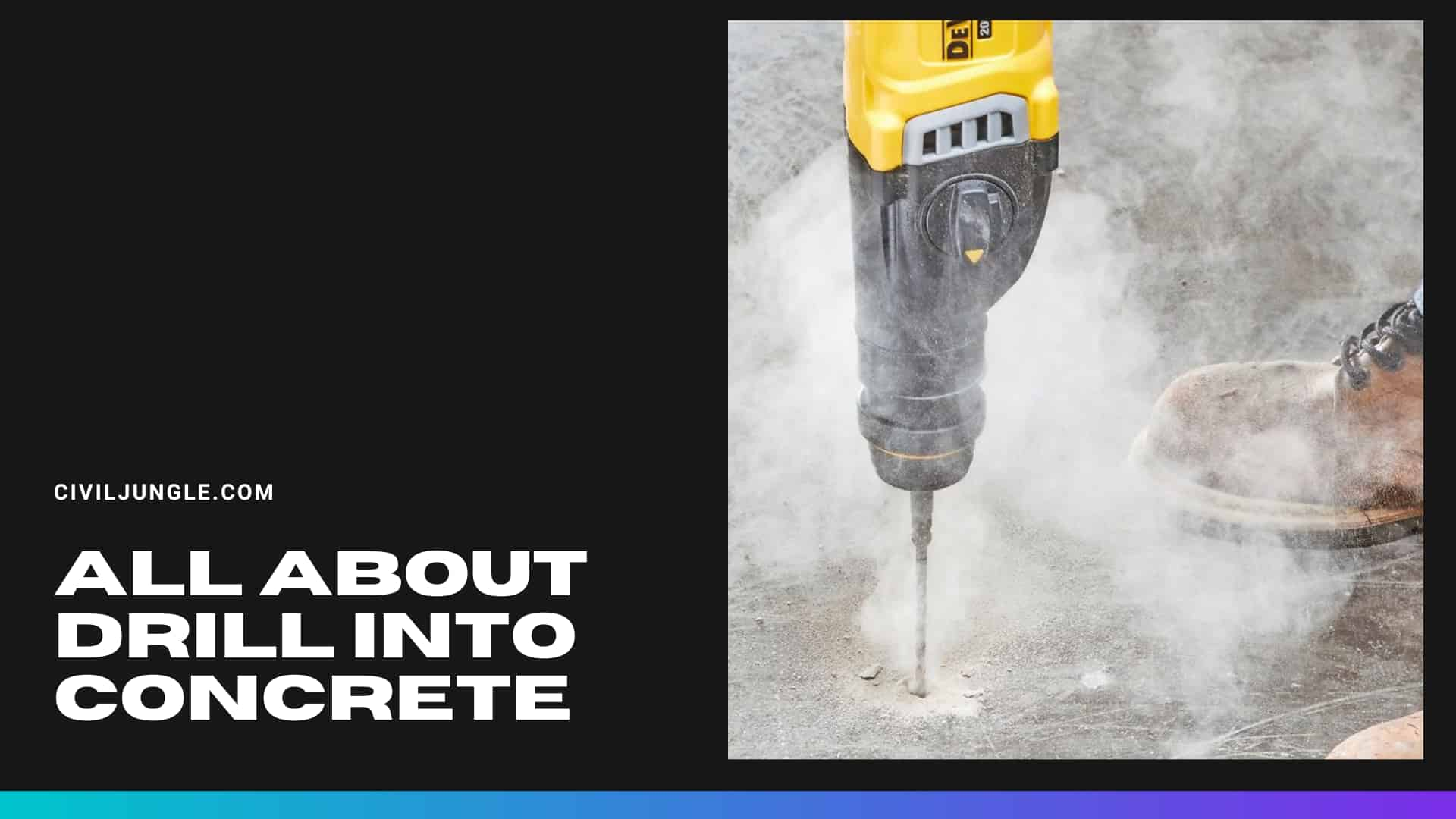
How To Drill Into Concrete?
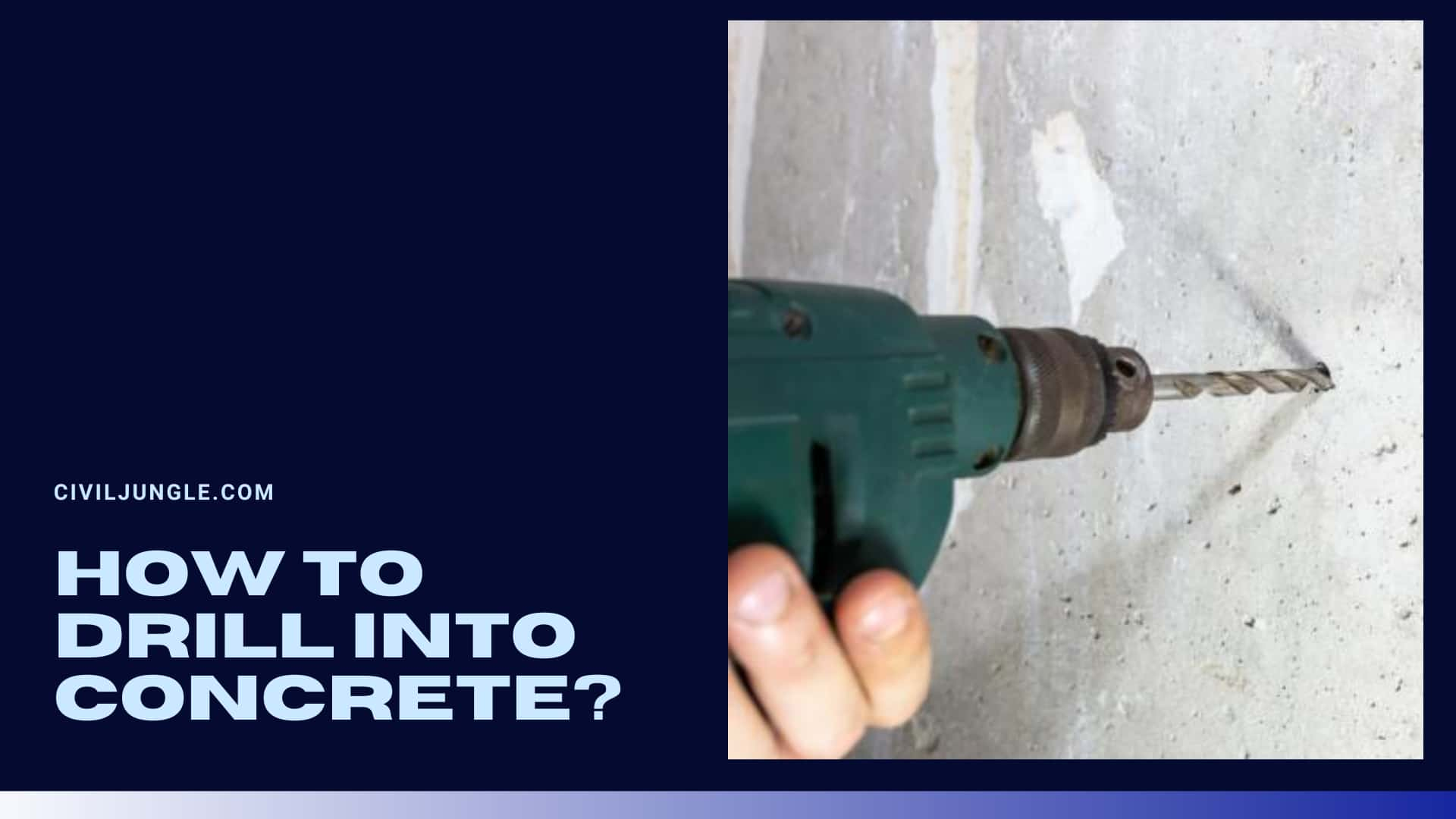
Drilling into concrete can be a challenging task, but with the right tools and techniques, it can also be a straightforward process. Whether you’re installing anchors, hanging shelves, or completing any other concrete drilling project, it’s essential to follow a few key steps to ensure a successful outcome.
- Before you begin drilling, you need to make sure you have the right tools for the job. A hammer drill is the most suitable tool for drilling into concrete, as it combines rotary motion with a hammering action that breaks up the concrete as you drill. A regular drill will not have enough power to drill into concrete, so make sure you have a hammer drill or rent one if necessary.
- Next, make sure you have the right drill bits for the job. Concrete is a very hard material, and it requires a carbide-tipped masonry drill bit to make holes. These drill bits have a specialized tip that is designed to penetrate concrete and other masonry materials.
- Once you have the right tools, it’s time to prepare the surface you will be drilling into. Make sure the surface is clean, dry, and free of any debris. If you’re drilling into an existing concrete wall, locate any reinforcing bars and mark them on the surface. Avoid drilling into these bars as they can cause your drill bit to break.
- Next, make a pilot hole. This hole will help guide your drill bit and make it easier to start the hole. The pilot hole should be slightly smaller than the final hole size you need. To make a pilot hole, place the tip of the drill bit against the surface, and gently press down to start the hole. Do not apply too much force or you may damage the surface.
- Once you have made a pilot hole, it’s time to start drilling. Begin by drilling at a slow speed and gradually increase the speed as you go. Make sure to keep the drill bit perpendicular to surface, as this will prevent the bit from wandering and ensure a straight hole. Additionally, apply firm, consistent pressure to the drill as you drill, but don’t apply too much force or you could damage the surface.
- As you drill, make sure to periodically stop and remove any debris that accumulates around the drill bit. This will keep the bit cool and prevent it from overheating. You can use a brush or a small vacuum to clean out the debris. Once you have reached the desired depth, stop the drill and remove the drill bit from hole. Clean out any remaining debris from the hole, and you’re ready to insert your anchor or complete any other necessary steps.
- In conclusion, drilling into concrete is a straightforward process when you have the right tools and techniques. Remember to use a hammer drill and a carbide-tipped masonry drill bit, prepare surface you will be drilling into, make a pilot hole, drill at a slow speed and gradually increase the speed, apply firm consistent pressure, and clean out any debris periodically. With these tips, you’ll be able to successfully drill into concrete and complete your project with confidence.
What You’ll Need For Drill Into Concrete
To drill into concrete, you’ll need the following tools and materials:
- Hammer drill: This is most suitable tool for drilling into concrete as it combines rotary motion with a hammering action that breaks up the concrete as you drill.
- Carbide-tipped masonry drill bit: Concrete is a very hard material, and it requires a specialized drill bit to make holes. A carbide-tipped masonry drill bit is designed to penetrate concrete and other masonry materials.
- Measuring tape or ruler: To determine the length and position of the holes you need to drill.
- Pencil or marker: To mark the surface where you will be drilling.
- Safety equipment: Eye protection and gloves are recommended when drilling into concrete as it can create dust and debris that can be harmful to your eyes and hands.
- Brush or vacuum: To remove debris from the drill bit and the hole as you drill.
- Anchors or other necessary materials: Depending on your project, you may need anchors, screws, or other materials to complete the job. Make sure you have everything you need before you start drilling.
Best Drills For Concrete
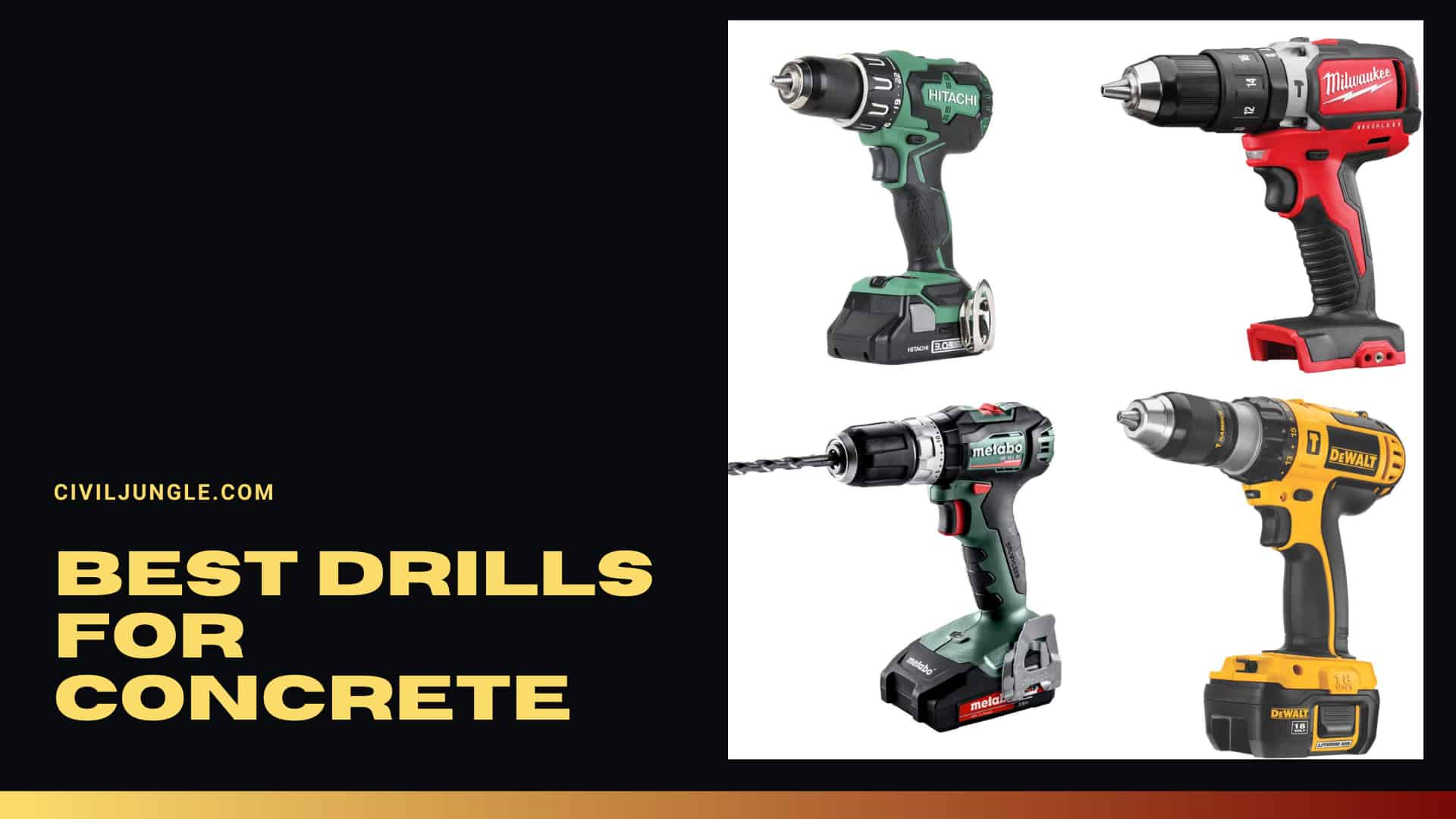
When it comes to drilling into concrete, not all drills are created equal. Here are some of the best drills for concrete:
- SDS-Plus Rotary Hammer Drill: This type of drill has a specialized chuck that holds SDS-Plus drill bits. It combines rotary motion with a hammering action, making it ideal for drilling into concrete and other masonry materials.
- Cordless Hammer Drill: If you need mobility and flexibility, a cordless hammer drill is a great option. They are powered by rechargeable batteries, so you don’t have to worry about a power source. However, they may not have the same power and speed as a corded drill.
- Spline Drive Rotary Hammer Drill: This type of drill uses a spline drive system that provides more torque and power than an SDS-Plus drill. It’s ideal for heavy-duty concrete drilling tasks.
Regardless of the type of drill you choose, make sure it has a hammer setting, as this will allow you to drill into concrete. Also, look for a drill with variable speed control, as this will allow you to adjust the speed according to the task at hand.
Best Concrete Drill Bit

When drilling into concrete, it’s essential to use the right type of drill bit. Here are some of the best concrete drill bits:
- Carbide-Tipped Masonry Drill Bit: This type of drill bit is specifically designed for drilling into concrete and other masonry materials. The tip is made of carbide, a hard and durable material that can withstand the high stress and heat generated during drilling.
- SDS-Plus Masonry Drill Bit: SDS-Plus drill bits are designed for use with SDS-Plus rotary hammer drills. They have a specialized shank that allows for quick and easy bit changes and a carbide tip that provides long-lasting durability.
- Multi-Material Drill Bit: If you need to drill into a variety of materials, including concrete, a multi-material drill bit is a great option. These drill bits are designed to work with different materials, including concrete, brick, and tile.
Regardless of the type of drill bit you choose, make sure it’s the right size for your project. Additionally, keep in mind that concrete drill bits can wear out quickly, so it’s a good idea to have extra bits on hand.
Concrete Drill Step By Step
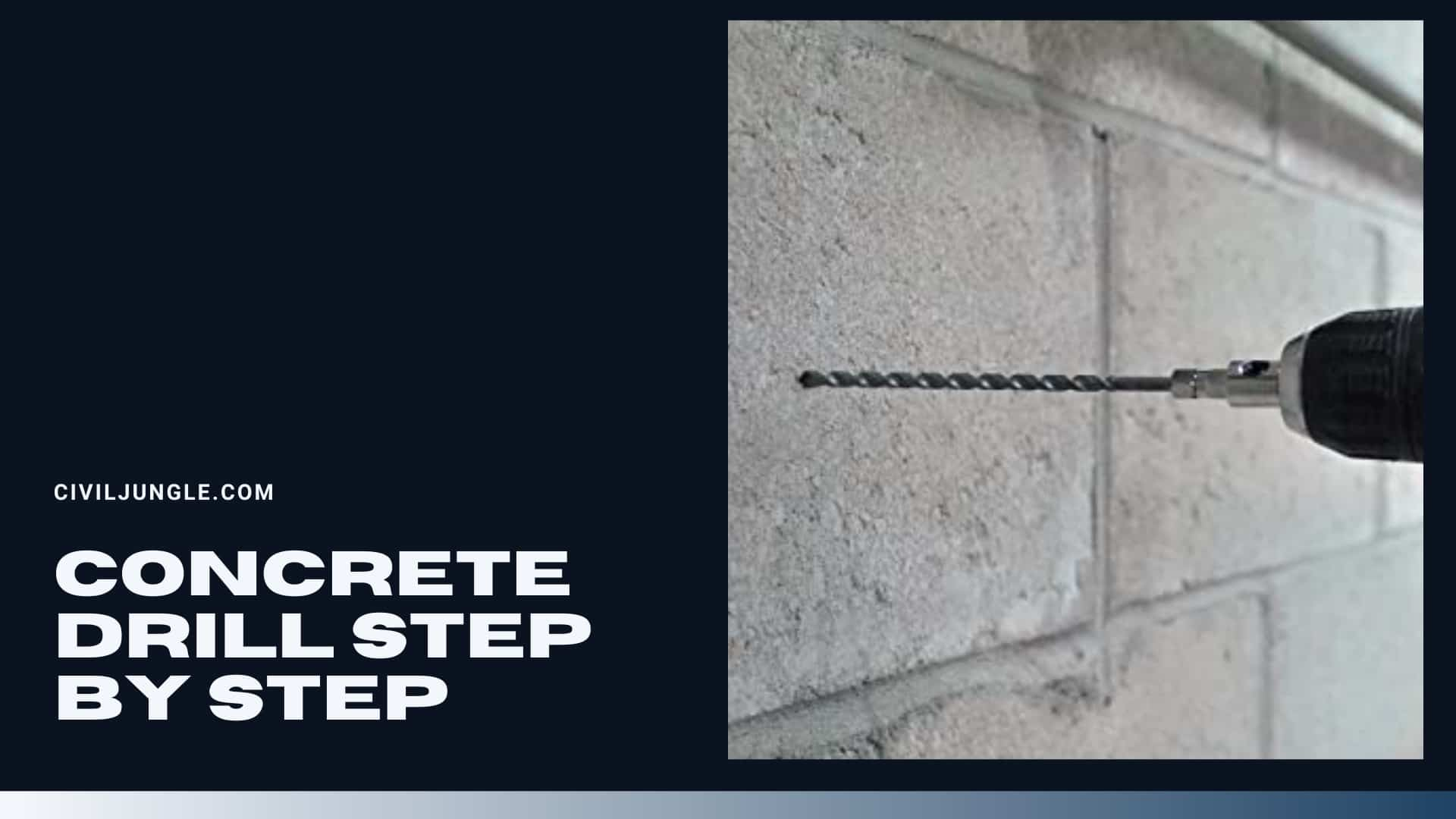
Drilling into concrete can seem intimidating, but with the right tools and techniques, it can be a straightforward process. Here is a step-by-step guide on how to drill into concrete:
- Prepare the surface: Clean the area where you will be drilling to remove any debris or dust. Use a measuring tape or ruler to determine the length and position of the holes you need to drill. Mark the surface with a pencil or marker.
- Choose the right drill bit: Select the right drill bit for your project. If you’re drilling into concrete, a carbide-tipped masonry drill bit is ideal. Make sure the drill bit is the right size for your project.
- Assemble the hammer drill: Attach the drill bit to the hammer drill. Make sure it’s securely fastened.
- Put on safety gear: To protect your eyes and hands, put on eye protection and gloves.
- Adjust the speed: Adjust the speed of the hammer drill according to the task at hand. If you’re drilling into a dense area of concrete, a lower speed will be necessary to avoid overheating the drill bit.
- Start drilling: Place the tip of the drill bit on the marked surface, and apply gentle pressure. When the drill bit begins to penetrate the concrete, apply more pressure and allow the drill to do the work.
- Clear debris: As you drill, clear the debris from the hole and the drill bit using a brush or vacuum. This will keep the drill bit from getting clogged and will also help you see the progress of the drill.
- Drill at an angle: If you need to drill into concrete at an angle, make sure to keep the drill bit perpendicular to the surface and avoid twisting the drill.
- Avoid overheating: If the drill bit starts to get hot, take a break and allow it to cool down. Overheating the drill bit can reduce its lifespan and make it more difficult to drill into concrete.
- Drill to the desired depth: Continue drilling until the drill bit reaches the desired depth. If you’re drilling a deep hole, you may need to stop periodically to remove debris and avoid overheating.
- Remove the drill bit: When you have reached the desired depth, turn off the hammer drill and remove the drill bit.
- Clean the hole: Use a brush or vacuum to remove any remaining debris from the hole.
Tips For Drilling Into Concrete
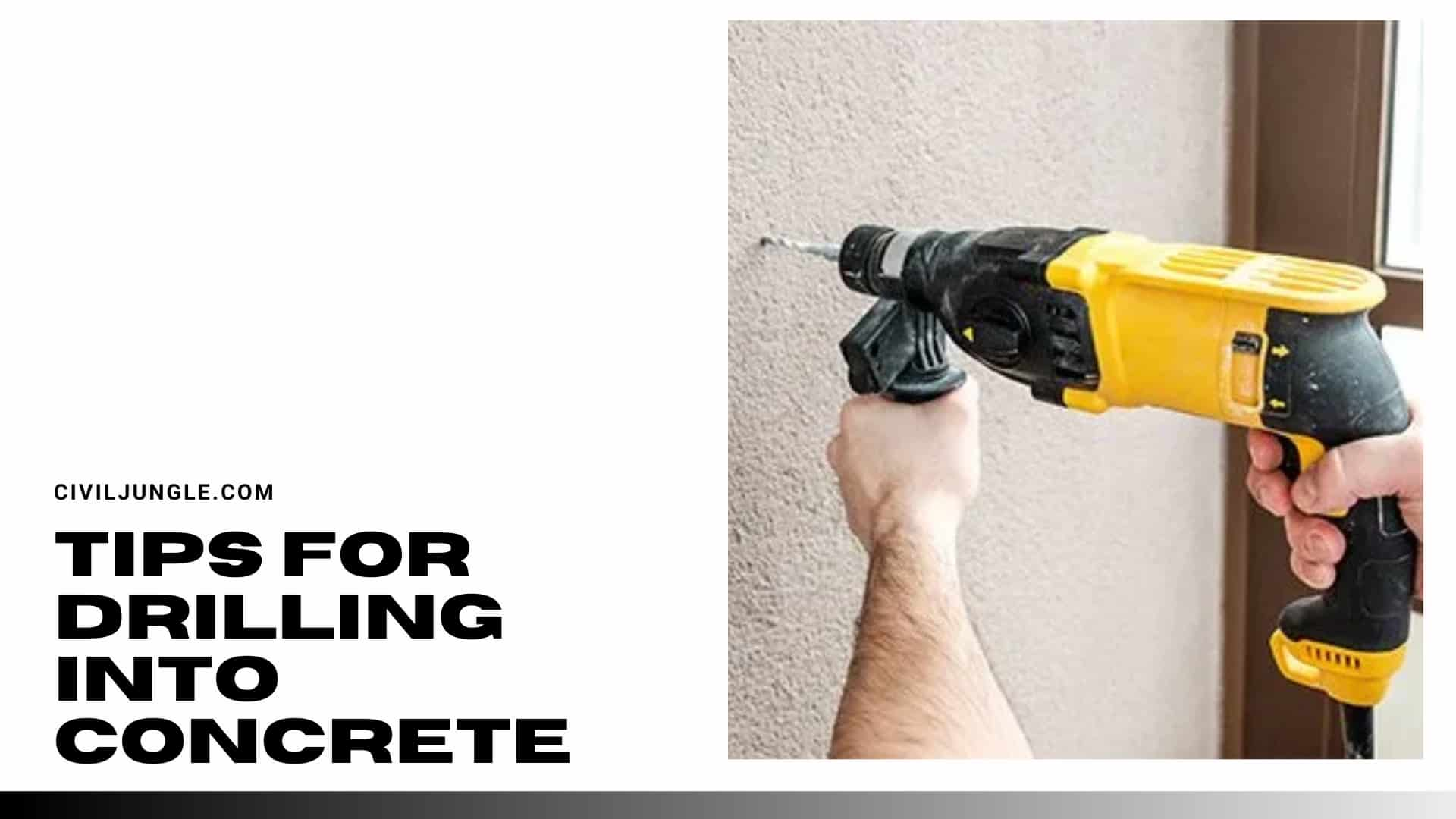
Drilling into concrete can be a challenging task, but with the right tools, techniques, and preparation, it can be done successfully. Here are some tips for drilling into concrete:
- Use the right drill: Make sure to use a hammer drill with a hammer setting when drilling into concrete. A regular drill will not have enough power to effectively drill into concrete.
- Choose the right drill bit: Select a carbide-tipped masonry drill bit specifically designed for drilling into concrete. Make sure the drill bit is the right size for your project.
- Lubricate the drill bit: Lubricating the drill bit will help reduce friction and heat, which can make drilling into concrete easier and prolong the life of the drill bit.
- Use a center punch: Before drilling, use a center punch to create a small indentation in the surface. This will help prevent the drill bit from slipping and keep it on track as you drill.
- Go slow: Start drilling slowly and gradually increase speed as the drill bit penetrates the concrete. Drilling too quickly can cause the drill bit to overheat and become damaged.
- Clear debris: As you drill, clear debris from the hole and the drill bit using a brush or vacuum. This will keep the drill bit from getting clogged and will also help you see the progress of the drill.
- Use a guide: If you need to drill into concrete at an angle, use a guide to ensure the drill bit stays on track and is perpendicular to the surface.
- Take breaks: If the drill bit starts to get hot, take a break and allow it to cool down. Overheating the drill bit can reduce its lifespan and make it more difficult to drill into concrete.
- Use the right technique: When drilling into concrete, apply steady pressure and let the drill do the work. Avoid twisting the drill or pushing too hard, as this can cause the drill bit to break or become damaged.
- Protect yourself: Always wear eye protection and gloves when drilling into concrete. The debris generated during drilling can cause eye and skin irritation and can also contain harmful particles.
- Know your limits: If you’re not confident in your ability to drill into concrete, consider hiring a professional to do the job. This will ensure the job is done safely and correctly.
FAQ
What Is the Best Type of Drill for Concrete?
For drilling into concrete, a hammer drill is the most effective tool. It combines rotary motion with a hammering action that breaks up the concrete as you drill. For heavy-duty tasks, an SDS-Plus or spline drive rotary hammer drill is recommended.
What Kind of Drill Bit Should I Use for Concrete?
Use a carbide-tipped masonry drill bit for drilling into concrete. These drill bits are specifically designed to handle the hardness of concrete and other masonry materials.
Can I Use a Regular Drill for Concrete?
A regular drill lacks the power and hammering action needed to effectively drill into concrete. A hammer drill or rotary hammer drill is required for this task.
How Do I Make Sure I Don’t Hit Rebar While Drilling?
Before drilling, locate and mark any reinforcing bars (rebar) in the concrete. Avoid drilling into these bars as they can damage your drill bit and cause it to break. Use a stud finder or rebar locator for more accurate detection.
How Can I Prevent the Drill Bit from Overheating?
To prevent overheating, drill at a slower speed and take breaks to let the drill bit cool down. Regularly clear debris from the hole and the drill bit to reduce friction and heat buildup.
What Safety Precautions Should I Take While Drilling into Concrete?
Always wear safety goggles and gloves to protect yourself from dust and debris. Ensure that the area is well-ventilated and keep bystanders away from the work area.
How Deep Should I Drill for Different Types of Anchors?
The depth of the hole depends on the size and type of anchor you are using. Check the manufacturer’s recommendations for specific depth requirements for different anchors.
Can I Drill into Concrete Without a Pilot Hole?
While it’s possible to drill directly into concrete, making a pilot hole can help guide the drill bit and make the process easier, especially for larger holes or harder concrete.
What Should I Do If the Drill Bit Gets Stuck?
If the drill bit gets stuck, stop drilling and reverse the drill to back the bit out slowly. Clear any debris from the hole and ensure that the drill bit is not overheated. Apply steady pressure and try drilling again.
How Can I Clean the Hole After Drilling?
Use a brush or vacuum to remove any remaining debris from the hole. This will ensure that anchors or other materials can be inserted properly and that the hole is clean for any subsequent steps.

